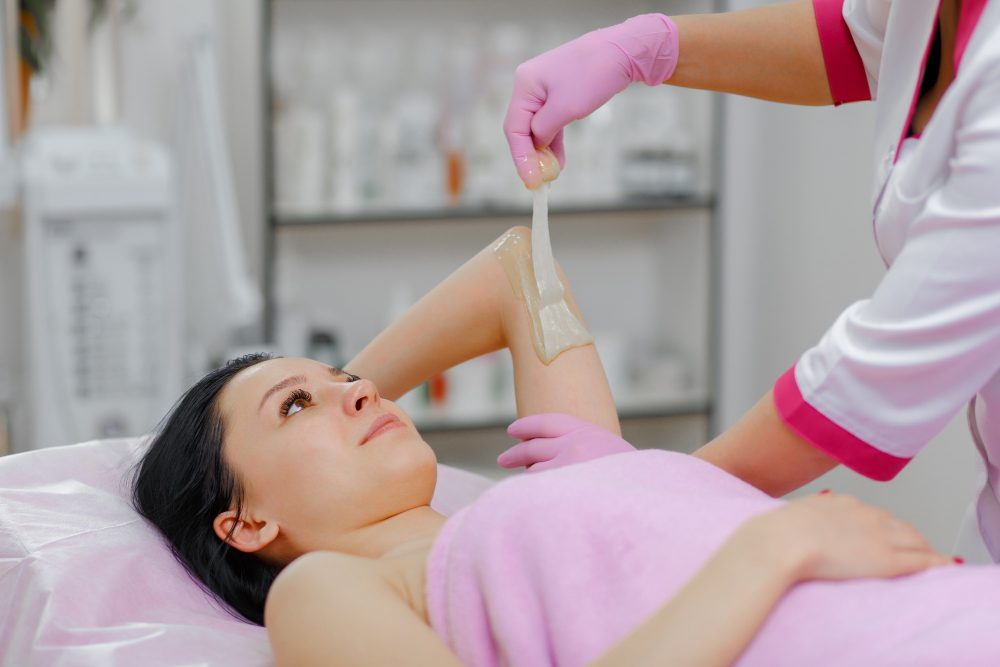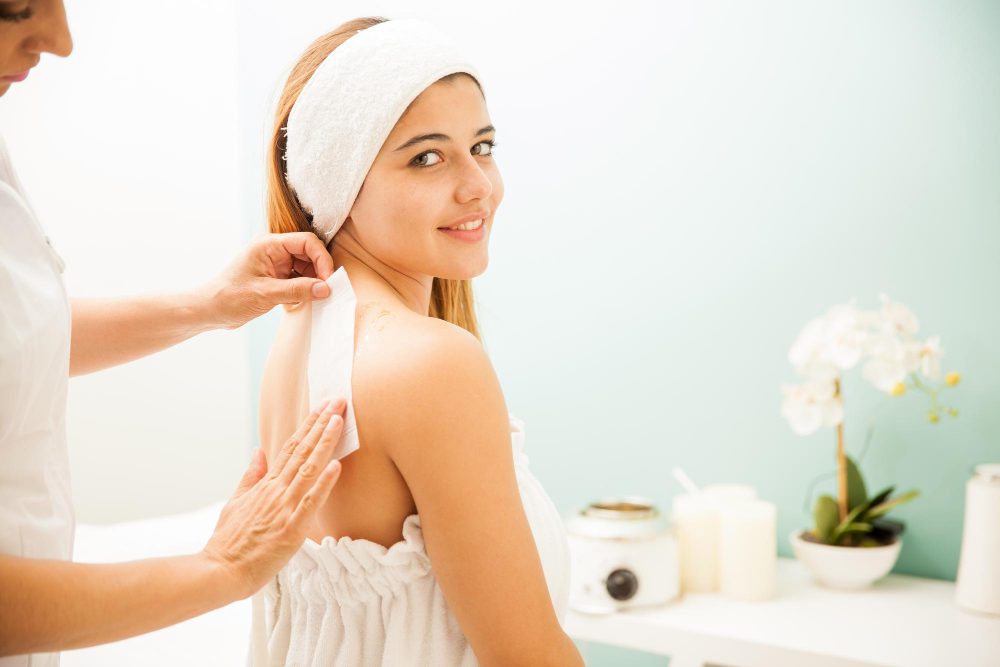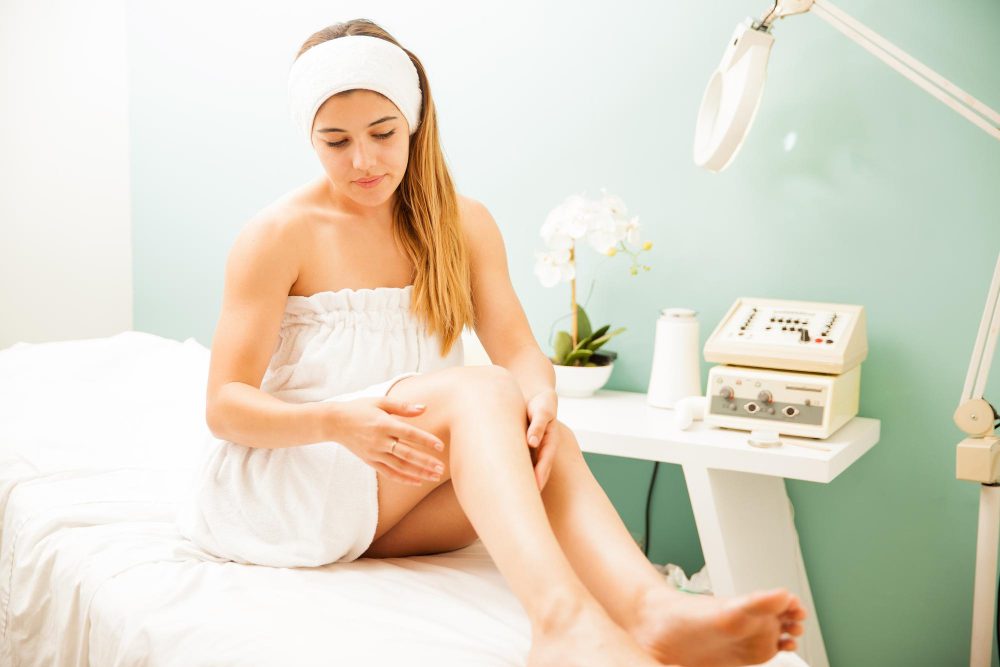How to Prepare for Intimate Hollywood or Brazilian Waxing: A Step-by-Step Guide for First-Timers
Understanding Intimate Waxing
What is Intimate Waxing?
Intimate waxing refers to the removal of hair from the pubic region using a special wax. This process can include various styles, with the most popular being the Hollywood and Brazilian waxes. A Hollywood wax involves the complete removal of all pubic hair, leaving the area entirely smooth. In contrast, a Brazilian wax typically leaves a small strip or triangle of hair at the front, while removing the rest. Both styles aim to provide a clean and groomed appearance, enhancing personal hygiene and comfort.
The History and Popularity of Intimate Waxing
Intimate waxing has a rich history, with its roots tracing back to ancient civilizations where hair removal was a common practice for both aesthetic and hygienic reasons. In modern times, the trend gained significant popularity in the late 20th century, particularly in Western cultures. The rise of intimate waxing can be attributed to changing beauty standards, the influence of fashion and media, and the desire for a polished look. Today, it is a widely accepted grooming practice for many individuals seeking a smooth and hair-free appearance.
Benefits of Intimate Waxing
One of the primary benefits of intimate waxing is the long-lasting smoothness it provides. Unlike shaving, which only removes hair at the surface level, waxing pulls hair from the root, resulting in slower regrowth and a smoother finish. This can lead to fewer ingrown hairs and less irritation over time. Intimate waxing also offers a sense of cleanliness and freshness, which can boost confidence and comfort. For many, the aesthetic appeal of a well-groomed pubic area is a significant advantage, contributing to a positive body image.
Common Misconceptions and Concerns
Despite its popularity, intimate waxing is often surrounded by misconceptions and concerns. One common myth is that waxing is unbearably painful. While some discomfort is expected, especially for first-timers, the pain is usually brief and diminishes with regular sessions. Another concern is the risk of skin irritation or infection. However, when performed by a trained professional using proper techniques and hygiene standards, these risks are minimal. It’s important to communicate any skin sensitivities or allergies to your esthetician to ensure a safe and comfortable experience.
Choosing the Right Style for You
Selecting the right style of intimate waxing is a personal decision that depends on individual preferences and comfort levels. Some may prefer the completely bare look of a Hollywood wax, while others might opt for the more modest Brazilian style. Factors to consider include your lifestyle, personal grooming habits, and how much maintenance you’re willing to commit to. Consulting with a professional esthetician can help you make an informed choice that aligns with your desired outcome and comfort level.
 Choosing the Right Waxing Salon
Choosing the Right Waxing Salon
Research and Recommendations
Start by conducting thorough research on waxing salons in your area. Look for salons with a strong online presence, including websites and social media profiles, which often provide insights into their services and customer experiences. Seek recommendations from friends, family, or online communities who have had positive experiences with specific salons. Personal referrals can be invaluable in finding a reputable place.
Check Reviews and Ratings
Online reviews and ratings on platforms like Google, Yelp, or Facebook can offer a wealth of information about a salon’s reputation. Pay attention to comments about cleanliness, professionalism, and customer service. Look for patterns in the feedback, both positive and negative, to get a balanced view of what to expect.
Evaluate Cleanliness and Hygiene
Hygiene is crucial when it comes to intimate waxing. Visit the salon beforehand to assess its cleanliness. Ensure that the salon follows strict hygiene protocols, such as using disposable gloves, sterilizing equipment, and maintaining a clean environment. A clean salon is a good indicator of professionalism and care for client safety.
Consider the Experience and Qualifications of the Staff
The expertise of the staff is vital for a comfortable waxing experience. Inquire about the qualifications and experience of the estheticians. Experienced professionals are more likely to provide a less painful and more efficient service. Some salons may display certifications or training credentials, which can offer additional assurance of their expertise.
Assess the Range of Services Offered
A salon that specializes in waxing or offers a wide range of waxing services is likely to have more experienced staff. Check if the salon provides the specific type of waxing you are interested in, such as Hollywood or Brazilian. A salon with a comprehensive service menu may also offer pre- and post-waxing care, which can enhance your overall experience.
Pricing and Packages
While price should not be the sole factor in your decision, it is important to consider. Compare prices among different salons to ensure you are getting a fair deal. Some salons offer packages or discounts for first-time clients, which can be a cost-effective way to try their services. Be wary of prices that seem too low, as they may reflect lower quality or lack of experience.
Location and Convenience
Choose a salon that is conveniently located, making it easier to fit appointments into your schedule. Consider the salon’s hours of operation and whether they offer flexible appointment times that suit your needs. A conveniently located salon can reduce stress and make the experience more enjoyable.
Customer Service and Comfort
The level of customer service can greatly impact your waxing experience. From the moment you contact the salon, pay attention to how they communicate and address your questions or concerns. A salon that prioritizes customer comfort and satisfaction is likely to provide a more pleasant experience. Look for a welcoming atmosphere and staff who are attentive and respectful.
Preparing Your Skin Before the Appointment
Exfoliate Gently
Exfoliating your skin a day or two before your waxing appointment is crucial. This process helps remove dead skin cells and allows the wax to adhere better to the hair, not the skin. Use a gentle scrub or exfoliating glove to avoid irritating the skin. Be sure to focus on the area to be waxed, but do not over-exfoliate, as this can lead to sensitivity.
Moisturize Regularly
Keeping your skin hydrated is essential for a smooth waxing experience. Apply a light, non-greasy moisturizer daily in the week leading up to your appointment. This helps maintain skin elasticity and can reduce the risk of irritation. Avoid using heavy creams or oils on the day of your appointment, as they can interfere with the waxing process.
Avoid Sun Exposure
Sun exposure can make your skin more sensitive and prone to irritation. Try to avoid tanning or prolonged sun exposure for at least 48 hours before your appointment. If you must be in the sun, use a high-SPF sunscreen to protect the area to be waxed.
Check Hair Length
For effective waxing, your hair should be about a quarter of an inch long, roughly the size of a grain of rice. If your hair is too short, the wax may not grip it properly. If it’s too long, it can cause more discomfort. Trim your hair if necessary, but ensure it’s not too short for the wax to adhere.
Avoid Certain Products
Refrain from using any harsh skincare products, such as retinoids or strong acids, on the area to be waxed for at least a week before your appointment. These products can make your skin more sensitive and increase the risk of irritation or injury during waxing.
Stay Hydrated
Drinking plenty of water in the days leading up to your appointment helps keep your skin hydrated from the inside out. Well-hydrated skin is more resilient and can handle the waxing process better, reducing the likelihood of irritation.
Wear Loose Clothing
On the day of your appointment, wear loose-fitting clothing to avoid friction and irritation on the freshly waxed area. Tight clothing can cause discomfort and may lead to ingrown hairs or irritation post-waxing. Opt for breathable fabrics to ensure comfort before and after your session.
What to Expect During Your Waxing Session
Arrival and Check-In
Upon arriving at the salon, you’ll be greeted by the receptionist or your esthetician. You’ll likely be asked to fill out a brief form detailing any allergies, skin sensitivities, or medical conditions that might affect the waxing process. This is also a good time to ask any last-minute questions you might have.
Consultation with Your Esthetician
Before the waxing begins, your esthetician will discuss your preferences and any concerns you may have. They will explain the process, including the type of wax being used and the areas to be waxed. This is your opportunity to communicate your desired style or shape, especially for Brazilian waxing.
Preparation
You will be led to a private room where you can undress from the waist down. You may be provided with a disposable thong or towel for modesty. The esthetician will ensure the room is clean and sanitized, and they will wash their hands and wear gloves to maintain hygiene.
Skin Cleansing and Prepping
The esthetician will cleanse the area to remove any oils, lotions, or sweat that could interfere with the wax adhering to the hair. A pre-wax oil or powder may be applied to protect the skin and ensure the wax only adheres to the hair.
Wax Application
The esthetician will apply warm wax to small sections of your skin using a spatula or roller. For Hollywood or Brazilian waxing, both hard and soft waxes may be used. Hard wax is often preferred for sensitive areas as it is less painful and more effective for coarse hair.
Hair Removal
Once the wax has set, the esthetician will quickly remove it, pulling the hair out from the root. This process is repeated until all the desired areas are hair-free. You may be asked to assist by holding the skin taut to minimize discomfort.
Post-Wax Care
After the waxing is complete, the esthetician will apply a soothing lotion or oil to calm the skin and reduce redness. They may also provide you with aftercare instructions, such as avoiding hot showers, tight clothing, or sun exposure for the next 24-48 hours.
Final Check and Feedback
The esthetician will check for any stray hairs and remove them with tweezers if necessary. They will also ask for your feedback on the experience and the results, ensuring you are satisfied with the service.
Aftercare: Taking Care of Your Skin Post-Wax
Immediate Aftercare
Soothe the Skin
Apply a cold compress or a soothing gel, such as aloe vera, to the waxed area to reduce inflammation and calm the skin. This helps to alleviate any immediate discomfort or redness.
Avoid Touching
Refrain from touching or scratching the waxed area to prevent irritation and the potential transfer of bacteria, which can lead to infection.
Clothing and Hygiene
Wear Loose Clothing
Opt for loose-fitting clothing made from natural fibers like cotton to allow the skin to breathe and minimize friction against the waxed area.
Maintain Cleanliness
Keep the area clean by gently washing with a mild, fragrance-free soap and lukewarm water. Pat the area dry with a clean towel to avoid irritation.
Moisturizing and Hydration
Hydrate the Skin
Use a gentle, fragrance-free moisturizer to keep the skin hydrated. This helps to prevent dryness and flakiness, which can occur after waxing.
Stay Hydrated
Drink plenty of water to keep your skin hydrated from the inside out, promoting overall skin health and recovery.
Avoiding Irritants
Skip the Gym
Avoid intense physical activities that cause excessive sweating for at least 24-48 hours post-waxing, as sweat can irritate the skin and lead to breakouts.
Steer Clear of Heat
Avoid hot baths, saunas, and steam rooms for at least 24-48 hours, as heat can exacerbate irritation and prolong redness.
Exfoliation and Ingrown Hair Prevention
Gentle Exfoliation
After 48 hours, gently exfoliate the waxed area with a soft washcloth or a mild exfoliating scrub to prevent ingrown hairs. Be careful not to over-exfoliate, as this can irritate the skin.
Use Ingrown Hair Products
Consider using products specifically designed to prevent ingrown hairs, such as those containing salicylic acid or tea tree oil, to keep the skin smooth and bump-free.
Monitoring and Seeking Help
Watch for Reactions
Monitor the waxed area for any signs of adverse reactions, such as excessive redness, swelling, or pus. If these occur, consult a dermatologist or healthcare professional.
Follow Professional Advice
Adhere to any specific aftercare instructions provided by your waxing professional, as they may have tailored advice based on your skin type and the specific wax used.
Managing Pain and Discomfort
Understanding the Pain
Waxing, especially in sensitive areas like the bikini line, can be uncomfortable for first-timers. The level of pain experienced varies from person to person, depending on individual pain tolerance, skin sensitivity, and the skill of the esthetician. It’s important to mentally prepare for some level of discomfort, but remember that the pain is temporary and often lessens with regular waxing sessions.
Pre-Waxing Tips
Exfoliate Gently
Exfoliating the skin a day or two before your appointment can help remove dead skin cells and prevent ingrown hairs. Use a gentle scrub or exfoliating glove to avoid irritating the skin, which can increase sensitivity during waxing.
Avoid Caffeine and Alcohol
Both caffeine and alcohol can make your skin more sensitive. It’s advisable to avoid consuming these substances at least 24 hours before your waxing session to minimize discomfort.
Take a Pain Reliever
Consider taking an over-the-counter pain reliever, such as ibuprofen or acetaminophen, about 30-45 minutes before your appointment. This can help reduce pain and inflammation during and after the waxing process.
During the Waxing Session
Communicate with Your Esthetician
Open communication with your esthetician is crucial. Let them know it’s your first time, and don’t hesitate to express any concerns or discomfort during the session. A skilled esthetician will work with you to ensure the process is as comfortable as possible.
Practice Deep Breathing
Deep breathing can help manage pain by promoting relaxation and reducing tension in the body. Focus on taking slow, deep breaths during the waxing process to help ease discomfort.
Post-Waxing Care
Apply a Cold Compress
Applying a cold compress to the waxed area can help soothe the skin and reduce any immediate pain or swelling. Use a clean cloth or an ice pack wrapped in a towel for a few minutes after your session.
Use Soothing Products
After waxing, apply a soothing lotion or gel containing aloe vera or chamomile to calm the skin and alleviate any irritation. Avoid products with alcohol or fragrances, as they can further irritate the skin.
Wear Loose Clothing
Opt for loose-fitting clothing after your waxing session to prevent friction and irritation on the freshly waxed skin. Tight clothing can cause discomfort and increase the risk of ingrown hairs.
Long-Term Pain Management
Regular Waxing
Regular waxing can lead to reduced pain over time as the hair becomes finer and sparser. Consistent appointments every 4-6 weeks can help maintain results and make each session more manageable.
Consider Numbing Creams
For those with low pain tolerance, numbing creams or sprays can be applied to the area before waxing. Consult with your esthetician or a dermatologist to find a suitable product and ensure it’s safe for use on sensitive areas.
Common Myths and Misconceptions About Waxing
Waxing is Extremely Painful
One of the most prevalent myths about waxing is that it is unbearably painful. While waxing does involve some discomfort, the level of pain varies from person to person and often decreases with regular sessions. Many first-timers are surprised to find that the pain is manageable and brief. Professional estheticians use techniques to minimize discomfort, such as applying pressure immediately after removing the wax strip.
Waxing Causes Skin Damage
Another common misconception is that waxing can damage the skin. When performed correctly by a trained professional, waxing is a safe method of hair removal that does not harm the skin. The key is to ensure that the skin is properly prepared and cared for before and after the session. This includes exfoliating beforehand and moisturizing afterward to maintain skin health.
Waxing Leads to Permanent Hair Removal
Some people believe that waxing will eventually lead to permanent hair removal. While waxing can reduce hair growth over time, it does not permanently remove hair. Regular waxing can lead to finer and sparser hair regrowth, but it does not eliminate hair follicles entirely.
Waxing is Only for Women
There is a misconception that waxing is a beauty treatment exclusively for women. In reality, waxing is a popular grooming choice for men as well. Many men opt for waxing to remove unwanted hair from areas such as the chest, back, and even intimate areas. The benefits of smooth skin and reduced hair growth appeal to all genders.
Waxing Causes Ingrown Hairs
While it is true that waxing can sometimes lead to ingrown hairs, this is not an inevitable outcome. Proper pre- and post-waxing care can significantly reduce the risk of ingrown hairs. Exfoliating the skin before waxing and moisturizing afterward helps to keep the skin smooth and prevent hair from becoming trapped beneath the surface.
Waxing is Unhygienic
Some people worry that waxing is unhygienic, especially in intimate areas. Professional waxing salons adhere to strict hygiene standards to ensure a clean and safe experience. This includes using disposable applicators, wearing gloves, and maintaining a sanitized environment. Choosing a reputable salon can alleviate concerns about hygiene.
You Need to Grow Your Hair Long Before Waxing
A common myth is that you need to let your hair grow very long before waxing. In reality, hair only needs to be about a quarter of an inch long for effective waxing. This length allows the wax to grip the hair properly without causing unnecessary discomfort. Waiting too long between sessions can make the process more painful and less effective.
Conclusion: Embracing the Experience
Understanding the Benefits
Embracing the experience of intimate waxing, whether Hollywood or Brazilian, begins with understanding the benefits it offers. Beyond the immediate aesthetic appeal, waxing can lead to smoother skin, slower hair regrowth, and a reduction in irritation compared to other hair removal methods. Recognizing these advantages can help you appreciate the process and its outcomes, making the experience more rewarding.
Building Confidence
The journey to embracing intimate waxing is also about building confidence. The first session might be daunting, but with each appointment, you become more familiar with the process and more comfortable with your body. This newfound confidence can extend beyond the waxing room, influencing how you carry yourself in everyday life. Trusting your esthetician and communicating openly about your needs and concerns can further enhance this confidence.
Cultivating Self-Care
Viewing intimate waxing as a form of self-care can transform the experience into a positive ritual. Taking the time to care for your body in this way can be empowering and affirming. It’s an opportunity to focus on yourself, prioritize your comfort, and indulge in a little pampering. By framing waxing as a self-care practice, you can shift your perspective and fully embrace the experience.
Embracing the Journey
Every waxing session is part of a journey towards personal grooming and self-expression. Embracing this journey means acknowledging that each experience is unique and contributes to your overall sense of well-being. Whether it’s your first time or you’re a seasoned pro, each session is an opportunity to learn more about your preferences and how to best care for your skin. Embracing the journey allows you to appreciate the process and the results, making intimate waxing a positive and empowering experience.

Sarah Partridge, the visionary behind Boss Queen Aesthetics, has carved a distinctive niche in the beauty and aesthetics industry with her creative approach and dedication to client satisfaction. Based in Tamworth, UK, Sarah specialises in a range of beauty services, from dermal fillers and Anti-Wrinkle to bridal hair and makeup, embodying a versatile aesthetic that meets the needs of a diverse clientele.








